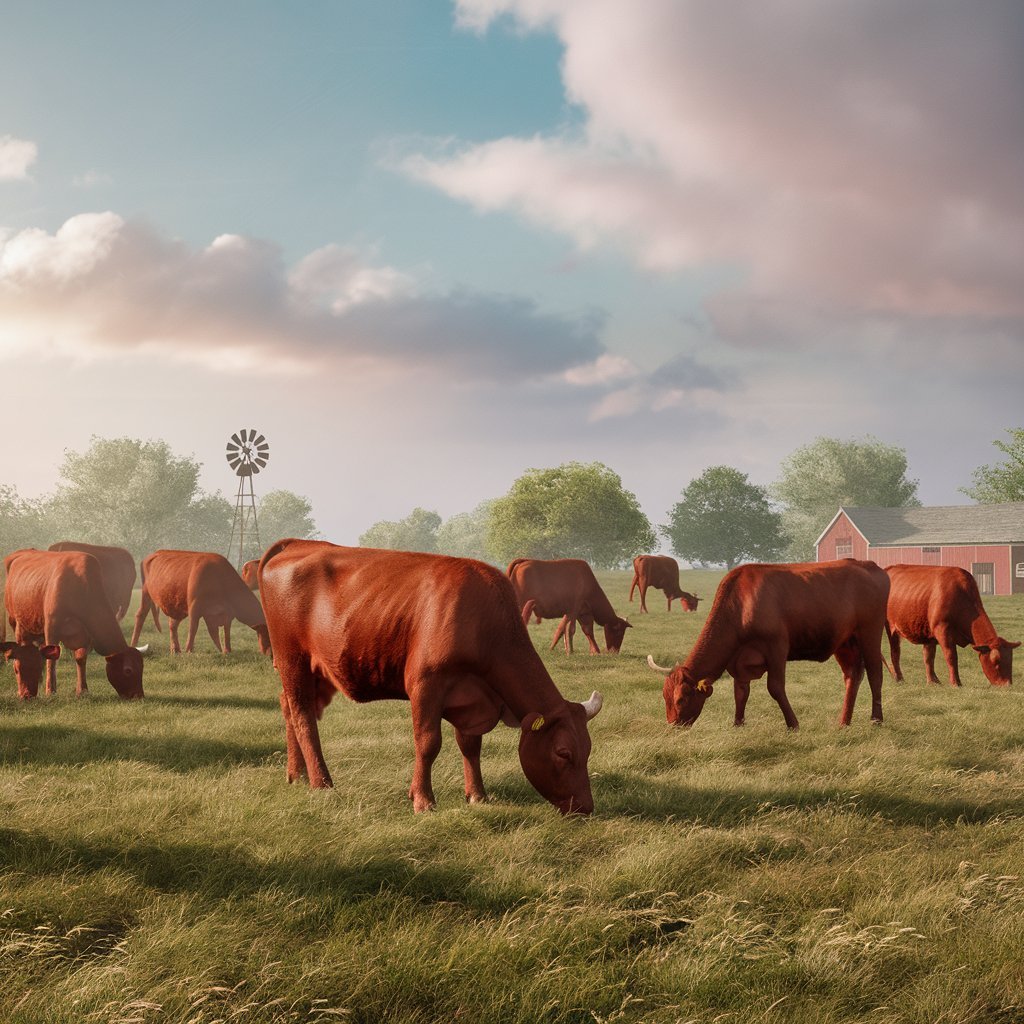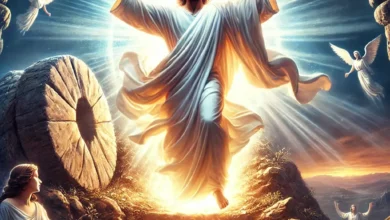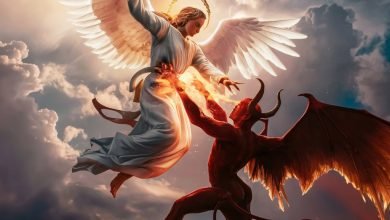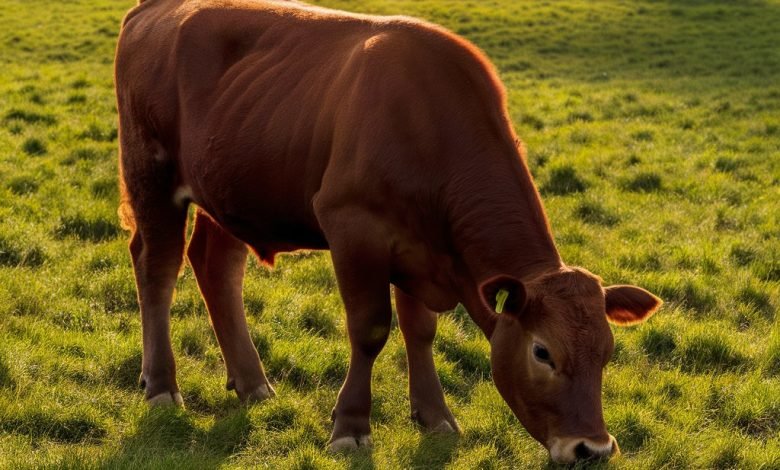
What is meaning of the red heifer in biblical prophecies?
Five red heifers have arrived in Jerusalem, which some see as a sign of the approaching end times. What exactly do red heifers have to do with the Second Coming of Christ?
In September 2022, the Jerusalem Post reported that a Christian farmer in Texas raised five flawless red heifers and sent them to the Temple Institute in Jerusalem. These heifers were inspected and approved by Jewish rabbis. Upon their arrival, around 300 people welcomed the five heifers. One person even sounded the shofar, a horn used in Jewish ceremonies. These red heifers are now kept on a farm in Haifa. They are being carefully monitored to ensure they remain without blemish, as prescribed in the Torah for sacrificial purposes.
According to recent reports, the sacrifice of one of these red heifers might take place in 2024, specifically around the Passover holiday, which falls on April 22, 2024. This timeline aligns with the age the heifers must reach before being considered for sacrifice. The chosen location for this significant event is the Mount of Olives, seen as a biblically suitable place for such a ceremony, just east of the Temple Mount.
This development has both religious and political implications, especially given the sensitive location in Jerusalem, where Jewish and Islamic holy sites are intertwined. The preparation and potential sacrifice of a red heifer are seen by some as the fulfillment of biblical prophecies, creating complex layers of belief and expectation within the community. This topic has sparked debate and concern among various groups, highlighting the profound historical and spiritual significance of these events.
What makes this event so exciting? Let’s take a quick look at its meaning and delve deeper into this prophecy from the Book of Revelation in the Bible.
فرست محتوا
- 1 Immediate Facts About the Significance of the Red Heifer in the Bible
- 2
- 3 What Does the Bible Say About the Red Heifer?
- 4 What Is the Significance of the Red Heifers in Israel?
- 5 What Are Red Heifers Used for in Judaism?
- 6 Do Red Heifers Matter in the End Times?
- 7 What does the Bible say about Jesus’ sacrifice?
Immediate Facts About the Significance of the Red Heifer in the Bible
The preparation of red heifers for sacrifice in Jerusalem is a significant event in Jewish religious practice, deeply rooted in Torah laws and eschatological expectations. According to the Torah, specifically in the Book of Numbers, chapter 19, a red heifer without any physical blemishes and that has never been yoked is required for a purification ritual. This ritual is essential for removing contamination from contact with a corpse, which is necessary for those participating in Temple ceremonies.
The significance of preparing red heifers today, especially in Jerusalem, is linked to the anticipation of the reconstruction of the Third Temple—a central event in ancient prophetic texts and contemporary eschatological beliefs. For many devout Jews, especially those aligned with certain Orthodox groups, the existence of a red heifer that meets all the Torah’s criteria is seen as a step toward fulfilling these prophecies and reviving Temple rituals. The ashes of the red heifer, after the animal is sacrificed and burned, are used to create the purification water essential for priests and worshippers to achieve ritual purity.
This action has also attracted the attention of some evangelical Christian groups, who see the preparation of a red heifer in Jerusalem as the fulfillment of biblical prophecies related to the end times. Therefore, the preparation and potential sacrifice of a red heifer hold not only religious significance in Judaism but also intertwine with Christian eschatological themes, making it a highly symbolic event in both religious communities.
Read More : 7 signs that indicate the end times are near
What Does the Bible Say About the Red Heifer?
Numbers 19:1-10 explains what God instructed Moses and Aaron regarding red heifers (red female cows). The Israelites were to bring a red heifer without blemish and that had never been yoked. Unlike other sacrifices performed inside the camp, the priest Eleazar had to take the red heifer outside the camp and slaughter it.
Eleazar then had to “take some of its blood on his finger” and sprinkle it seven times toward the front of the Tent of Meeting (Numbers 19:4). At that time, the entire red heifer, including its dung, was to be burned in his sight. The priest would then add cedarwood, hyssop, and scarlet wool to the fire burning the red heifer (the reason for using scarlet wool is unclear).
The overseeing priest could return to the camp only after washing his clothes and bathing, but he remained unclean until evening. Similarly, the person who burned the red heifer had to wash his clothes, bathe, and remain unclean until evening.
Then a clean person would gather the red heifer’s ashes and place them outside the camp in a clean place. The Bible explains that the ashes were “to be kept by the Israelite community for use in the water of cleansing; it is for purification from sin” (Numbers 19:9). Anyone who collected the ashes also had to wash his clothes and remain unclean until evening. God added this requirement: “This is a lasting ordinance both for the Israelites and for the foreigners residing among them” (Numbers 19:10).
When the Israelites properly stored the red heifer’s ashes, they used them to purify people who had become unclean. Numbers 19:11-22 provides details on how a person becomes unclean (by touching dead bodies) and how to mix the ashes with fresh running water and then sprinkle the mixture with hyssop on the person to be cleansed.
What Is the Significance of the Red Heifers in Israel?
Since the Apostle Paul’s letters to the Thessalonian church in 51 A.D., saints have focused at least partially on the return of Christ—the Second Coming (1 Thessalonians 4:13-18). Some Christians emphasize all that they believe will happen during Jesus’s return. Various signs and prophecies from their biblical interpretation define their eschatological beliefs. The appearance of flawless red heifers signals an event that has not been seen for 2,000 years. Orthodox Jews eager to build the Third Temple to restore the Old Testament sacrificial system need red heifers to resume ceremonies. According to some Christians, the “perfect” red heifer prescribed in the Bible signifies more: it indicates the end of the age.
What Are Red Heifers Used for in Judaism?
Today, most Orthodox Jews still intend to perform this purification rite. In contemporary Torah reading, the verses from Numbers describing this rite are included in the final reading on Shabbat Parah, the Sabbath of the Red Heifer. Shabbat Parah occurs on the last Sabbath of Adar, just before Passover. The last Shabbat Parah was observed on Friday, March 25, 2022. The next will be on Friday, March 10, 2023.
Because spiritual purity was so important in the Old Testament, anyone entering the Temple had to be pure. The Jerusalem Post article explains how these purification requirements mean that Orthodox Jews need red heifers before they can build the Third Temple. They seek to follow God’s command literally as their hope for building the Third Temple materializes.
Do Red Heifers Matter in the End Times?
For premillennial Christians regarding the end times, even the arrival of a rabbi-approved red heifer in Jerusalem signifies the rapture is near. They believe that the Third Temple will be built during the end times and that all prophesied events will follow.
For followers of Judaism, the arrival of the red heifer signifies the coming of the Messiah. According to Jewish tradition, the Mishnah records that only nine perfect red heifers were used from the time of the Tabernacle until 70 A.D. (when Roman soldiers destroyed the Second Temple). The arrival of a potential tenth perfect red heifer means hope for the Messiah’s appearance and the Temple’s rebuilding. The Jewish scholar Maimonides believed that the tenth animal “will only be found and sacrificed when King Messiah is ready to appear.”
Devout Jews await the fulfillment of Ezekiel 36:25-26, which they call Haftarah. Followers say this passage refers to cleansing—being purified from human sins—by God. In this interpretation, God will sprinkle clean water on them, cleanse them from all impurities, and then “give you a new heart and put a new spirit in you.” This renewal of individual and nation ties into the theme of redemption in Judaism during Passover.
There are four major branches of modern Judaism. While Reform and Reconstructionist Jews seek to modernize Judaism, reinterpreting the Torah and other Jewish practices, Conservative Jews accept nearly all of the Torah. Orthodox Jews go further, insisting on following traditional rituals as much as possible in contemporary society. The absence of a Temple in Jerusalem limits their ability to perform all traditional rituals fully.
King Solomon built the First Temple, which was destroyed by the Babylonians. Ezra and Nehemiah detail the building of the Second Temple when King Darius allowed Jews to return to Judea. This Temple, with some refurbishing by Herod the Great, stood until the Romans destroyed it.
Orthodox Jews are at the forefront of efforts to build the Third Temple in Jerusalem as they await their promised Messiah. These efforts include Temple plans, crafting Temple tools and instruments, and identifying priests from the Levite lineage. All these elements currently exist (priests are being trained at the Nezer Hakodesh Institute of Priestly Studies). Many Jews look to Haggai, whose author participated in building the Second Temple, for the promise of peace after the Temple’s completion.
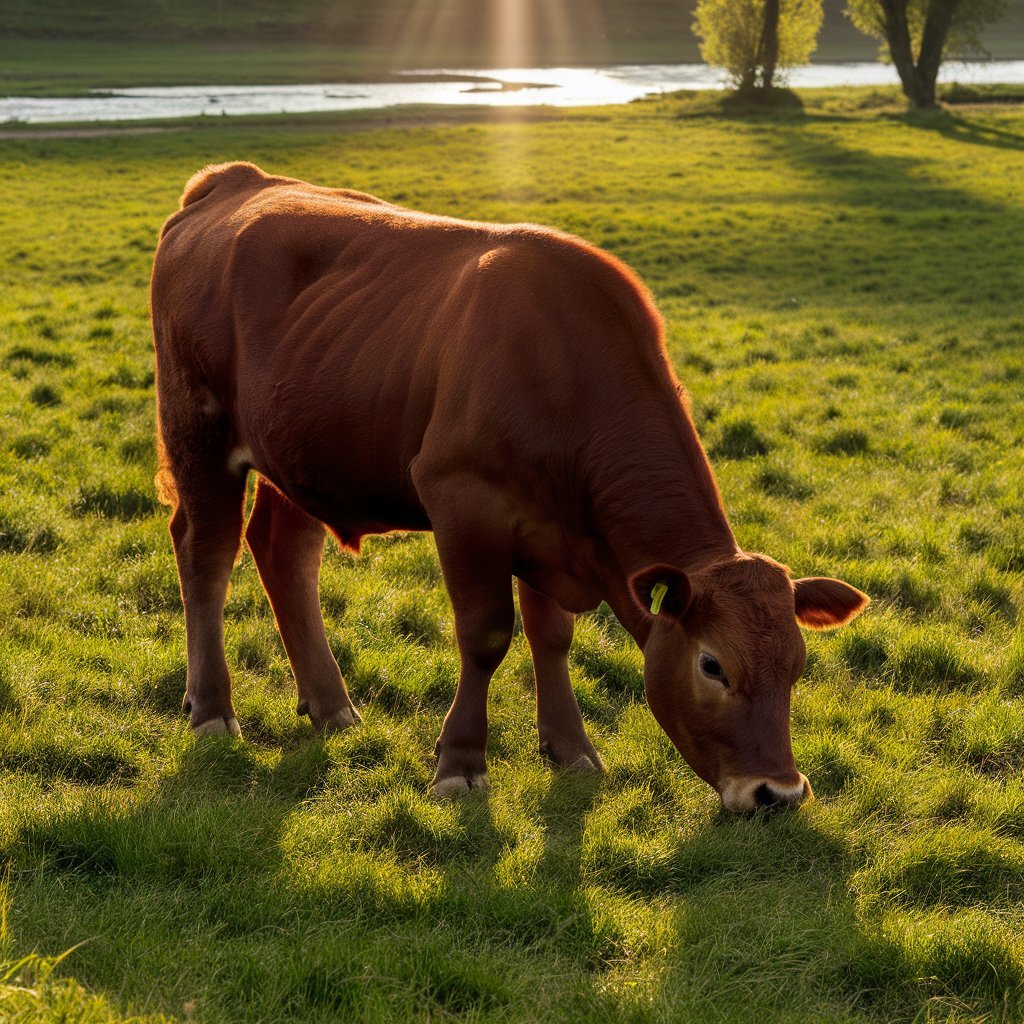
What does the Bible say about Jesus’ sacrifice?
Even with the arrival of the five red heifers, there may still be challenges. Some Orthodox Jews believe the sacrifice cannot occur without mixing the ashes of the original red heifer with the new ones. Others point out that the Temple Institute previously thought it had flawless red heifers, but they developed blemishes. Anything “less than perfect” will not be acceptable.
Moreover, the red heifer sacrifice must be made before the animal reaches three years old. Therefore, if the five Texas-bred red heifers mature even with one hair of a different color, the excitement will diminish. Even if the heifers pass inspection and are used, Orthodox Jews want a new Temple built in the original location. Unfortunately, as previously discussed many times, the place where the Second Temple once stood is where the Dome of the Rock, a Muslim holy site, currently sits.
For Christians, who await the return of their Messiah, Jesus, the red heifer sacrifice in Jerusalem is a key event in the coming of the New Jerusalem. Many Christians believe that, for a time, the Antichrist will sit in the Third Temple, pretending to be God and deceiving many people. Only Christ’s return will establish his true reign on earth.
So, many Christians believe these five red heifers’ sacrifice signifies the imminent return of Christ to establish his millennial kingdom. Premillennialists teach that after the rapture, when believers are taken up to heaven, the Antichrist will reign. This time of tribulation will see many Jews convert to Christianity, leading to the rebuilding of the Temple. The Antichrist will defile the Temple, leading to intense tribulation until Christ defeats him and ushers in a millennium of peace.


